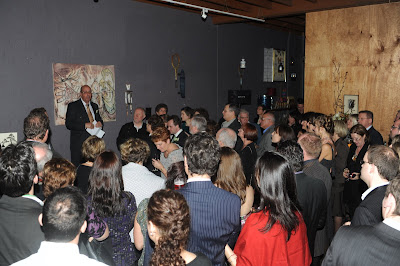Claire & I have just arrived back in
Pokhara from a 9 day trip walking in the
Annapurna ranges - a trip commonly called the "
Jomsom Trail". After 9 days I can now eat two large plates of curry, rice and
daal for lunch, am at my lowest weight since I was 18 and have concluded that a beard is an irritating adornment, even if Claire likes it - plus I might be mistaken for a French terrorist if I keep looking like this (so Claire thinks):

We walked from
Pokhara -
Tikedungha -
Ghorepani -
Tatopani -
Ghasa -
Mahrpa -
KagBeni -
Mukthinath -
Jomsom and flew back to
Pokhara. We generally left our guesthouse by 7.30 and arrived between 1-4pm depending on the distance to be covered. On a map here: http://www.alpaca-voyages.com/nep-map-kaligandai-jomsom-trek.gif
To tell the tale...
Pokhara-
Ghorepani (2 days)
The walk was through a lush, tropical region still at a relatively low level - up to about 2,600m at
Ghorepani. From time to time we had a view of a snow capped peak but for the most part saw steep hills of forest and rice paddies.
Poon Hill (dawn, day 3)
Awaking 1 hour before dawn we were quickly on our way up nearby
Poon Hill on a perfectly clear morning, our walk lit by a half-moon and countless stars. From the crest of
Poon Hill we looked upon 16 peaks in the
Annapurna and
Dhaulagiri ranges, all snow capped and crystal clear that morning. The mountains changed from dim-pale, to golden and then startling white as the moon light gave way to dawn and then dawn to day.
 Ghorepani
Ghorepani-
Kagbeni (4 days)
Starting from
Ghorepani the first half-day walk was what I expected each day to be- walking along mountain ridges with constant views of snow capped peaks. We undertook a full-day descent to
Tatopani from Ghorepani which hurt the knees, a soreness that was thankfully relieved by the natural hot springs at
Tatopani.
From
Tatopani the walk changed significantly as we walked along a dry river bed - in an immensely wide valley - for three days. The landscape changed from tropical, to alpine, then to an arid bareness, the hills devoid of trees and a dusty wind blowing.
Along the way we passed through many small towns and were passed in turn by many sheep flocks heading towards
Pokhara for the upcoming festival - a big family bash in which each family gathers, slaughters a sheep at home and eats well for a week. The mountain towns are also supplied by foot and hoof and we were also constantly overtaken by people carrying immense loads and donkey trains plodding along.
Kagbeni-
Mukthinath
Climbing half our day's 1,110m ascent in the first hour we soon left behind the dry river bed of our last 3 days' walk. We walked near the ridge of an arid hill, to our left the valley fell steeply away to a river below before rising steeply to the opposing hill's peak. In front of us
Annapurna's icy high pass, at 5000
m's, was flanked on both sides by mountains reaching 7,000
m's above sea level. The mountains slouched like Elizabethan lords, clouds forming feathers in their caps. A band of light clouds of dazzling silver formed their belt and the same
brightness illuminated their boots, the river below.

After
several hours walk we turned into
Mukthinath Valley.
Jarakoth town halfway up the valley was brown and white walls. The buckwheat crop, just ready for harvesting, was burnished pink. The trees had either turned yellow or were still green, the colours requiring no more sophisticated description or
simile to capture their colour. At this closer distance the mountains were no longer feudal lords but rough diamonds forced from the earth and uncut by the hands of man.

I have only seem
David to rival the valley's beauty, an unlikely comparison but one that came to mind without prompting. I will carry the memory without being able to communicate it because of the laws of light and photography and because Virginia Woolf wrote correctly that attempting to truly describe natures' colour stays the pen because of the impossibility of the task.

We walked without talking and hardly encountering others (finally free from the frequent tourists, guides, porters, carriers, policemen, soldiers, workmen, shepherds and sheep flocks, donkey drivers and pack-trains, and the
occasional jeep, motorbike or helicopter). At that height there was no running river, mammal, bird or hidden insect providing background noise. When we walked I heard our footsteps and my breathing, when we stopped I heard my heart and our breathing and finally silence, something rare in my life.

















































